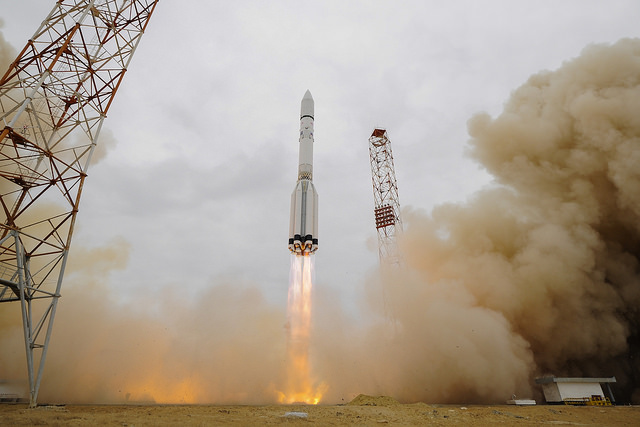
Two European Mars probes survived their launch in good shape today (March 14) and are officially on their way to Mars.
The Trace Gas Orbiter (TGO) and Schiaparelli lander — the first phase of the two-part, European-led ExoMars life-hunting program — phoned home today on schedule at 5:30 p.m. EDT (2130 GMT), 12 hours after blasting off together from Baikonur Cosmodrome in Kazakhstan.
TGO's two solar arrays deployed shortly after radio contact was established, European Space Agency (ESA) officials announced via Twitter.
"We have a mission, and for the second time, Europe is going to Mars!" ExoMars flight operations director Michel Denis said from ESA's control center in Darmstadt, Germany, just after TGO's signal was received. "Go, go, go, ExoMars!" he said.
The European Space Agency's (ESA) first Mars mission was Mars Express, which launched an orbiter and a lander in 2003. The orbiter is still operating at the Red Planet, but mission controllers lost contact with the lander, known as Beagle 2, shortly before it touched down.
TGO and Schiaparelli will now cruise through space for another seven months. If all goes according to plan, the pair will separate on Oct. 16; three days later, TGO will be captured into Mars orbit, and Schiaparelli will make its way to the Red Planet's surface for a soft landing.
TGO's main goal is to hunt for methane, a possible sign of Mars life, in the planet's atmosphere. The spacecraft will also map subsurface hydrogen deposits and scout out possible landing sites for the second phase of the ExoMars program, a life-hunting rover that's scheduled to launch in 2018. (TGO will also serve as a communications relay between that rover and mission control back on Earth.)
Get the Space.com Newsletter
Breaking space news, the latest updates on rocket launches, skywatching events and more!
Schiaparelli will gather some environmental data on the Martian surface for a few days, but the probe's main job is to test out entry, descent and landing technologies for the 2018 rover.
ESA is partnering with Russia's federal space agency, known as Roscosmos, on the ExoMars program. The Russian agency is providing Proton rockets for both launches, the landing system for the 2018 rover and some scientific instruments.
NASA was ESA's original ExoMars partner, but the American space agency dropped out of the project in early 2012, citing budget issues.
Follow Mike Wall on Twitter @michaeldwall and Google+. Follow us @Spacedotcom, Facebook or Google+. Originally published on Space.com.
Join our Space Forums to keep talking space on the latest missions, night sky and more! And if you have a news tip, correction or comment, let us know at: community@space.com.

Michael Wall is a Senior Space Writer with Space.com and joined the team in 2010. He primarily covers exoplanets, spaceflight and military space, but has been known to dabble in the space art beat. His book about the search for alien life, "Out There," was published on Nov. 13, 2018. Before becoming a science writer, Michael worked as a herpetologist and wildlife biologist. He has a Ph.D. in evolutionary biology from the University of Sydney, Australia, a bachelor's degree from the University of Arizona, and a graduate certificate in science writing from the University of California, Santa Cruz. To find out what his latest project is, you can follow Michael on Twitter.









